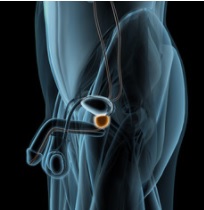What is a deep tissue massage?
What is a deep tissue massage?
This is one of the most effective massages that deals with chronic pain, stiffness or soreness of a particular muscle group or location. It is a conventional technique that is respected the world over and widely employed by sports massage therapists as well as physiotherapists.
How does it work?
The science works on the premise that through slow and concentrated strokes, deeper layers of muscle tissue are realigned to bring about greater benefit such as flexibility and faster recovery from injury. The strokes used are the same as that are found in the more classical forms of therapy but the main difference is in the actual employment of a rub.
 The masseuse can use fingers, thumbs, the forearms and even the elbows in order to reach deep into the muscle tissue and fascia (the connective tissue)
The masseuse can use fingers, thumbs, the forearms and even the elbows in order to reach deep into the muscle tissue and fascia (the connective tissue)
With bands of deep and painful tissue (called adhesions) that are located in the muscles, ligaments and tendons, the onset of poor blood circulation, inflammation and stiffness are part of the common symptoms can have an impact on mobility and general health. It is the duty, therefore, of the therapist to use massage oil and direct deep pressure to break the adhesions, thereby releasing pain and discomfort and so restoring the structure to its default position.
What is noteworthy about deep tissue is that it can take from several hours to several days for the actual massage to come to a respectable conclusion. The sheer amount of work to impact on the muscle tissue is a very exhaustive and comprehensive process, it literally takes several sessions for the effects to be felt. Quite an amusing anecdote is associated with this in that the after-effects are referred to as ‘the pain that feels so good!’.
To achieve this, five primary techniques are utilised:-
1. Active motion
2. Passive motion
3. Static pressure
4. Muscle stripping
5. Negative pressure
As for active motion, the client has to alternate between flexing and relaxing a muscle group. Upon flexing a muscle, the fibres spread so the therapist would wiggle between the fibres and through the relaxation of the muscle, the actions can penetrate deeper. Typically, this process can take a good 20 minutes and this technique is known to create ‘dull pain’.
The passive motion works on the same basis in that a wiggling is required between the flexing and relaxing states. However, the biggest difference lies in the practice that the therapist has to move a particular muscle group with one hand in unison to massaging the tissue. This is more challenging for the therapist and as expected, takes a good length of time.
 Those who say that a massage can be painful are referring to the static pressure approach. The use of fingers, thumbs and even elbows would be used on a specific location within the muscle and this can often lead to discomfort as well as mild bruising. Muscle stripping is one of the most controversial techniques but one that is grounded in scientific principles. Essentially, its approach is to reinjure a muscle group in order for it to re-heal properly.
Those who say that a massage can be painful are referring to the static pressure approach. The use of fingers, thumbs and even elbows would be used on a specific location within the muscle and this can often lead to discomfort as well as mild bruising. Muscle stripping is one of the most controversial techniques but one that is grounded in scientific principles. Essentially, its approach is to reinjure a muscle group in order for it to re-heal properly.
This is often used to deal with chronic pain or extreme cases of sports injuries whereby the client is encouraged to breathe deeply and stretch whilst the muscle is ‘stripped’ using firm and deep movements that result in realignment of fibres.
As is the case with all healing processes, the release of toxins is essential and one way to achieve this is by cupping therapy or negative pressure. This is a major component in Chinese and Islamic Medicine whereby a ‘knot’ is released that unties the build up of lactic acid and unhealthy fluids.
All of the above procedures are highly specialised techniques and should only be practiced by a qualified health professional. Once the techniques have been employed , the results can be life changing!


Comments
Post a Comment